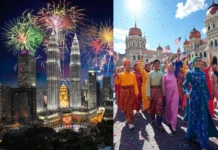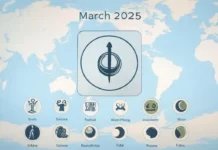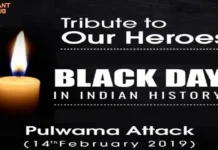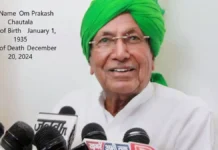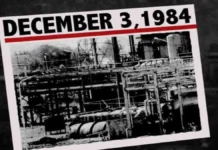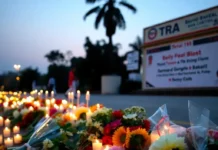On 26th November 2008, Mumbai, India’s bustling financial and cultural hub, was rocked by a series of devastating terrorist attacks that left an indelible mark on the city and its people. The Mumbai Terror Attack, often referred to as 26/11, was a moment of profound loss, pain, and heroism. A group of heavily armed militants carried out synchronized attacks across various landmarks in Mumbai, including the iconic Taj Mahal Palace Hotel, Leopold Café, Chhatrapati Shivaji Maharaj Terminus (CST), and Nariman House.
In the aftermath, more than 170 lives were lost, and over 300 people were injured. The attack shocked the world, highlighting the vulnerability of nations to terror and the resilience of those who fought back in the face of unimaginable danger. In this article, we remember the victims, honor the brave heroes who fought to protect lives, and reflect on the profound impact the event continues to have on Mumbai and the world.
Key Details
| Aspect | Details |
|---|---|
| Date & Day | November 26th, 2008, Thursday |
| Location | Mumbai, India |
| Significance | Memorializing the victims and recognizing the bravery of first responders and citizens during the attacks. |
| Key Figures Involved | Ajmal Kasab (terrorist), Police officers (Hemant Karkare, Vijay Salaskar, Ashok Kamte), NSG Commandos, Taj Hotel staff |
| Hashtags | #Remember2611 #MumbaiTerrorAttack #26Nov #MumbaiHeroes #Tribute2611 |
Background and History
The Mumbai Terror Attack 26/11 was meticulously planned and carried out by 10 gunmen from the Pakistan-based terror group Lashkar-e-Taiba. On the night of 26th November 2008, the attackers arrived by sea in inflatable boats and began their deadly assault at multiple locations across Mumbai.
- Taj Mahal Palace Hotel: The hotel was one of the main targets, where hostages were taken, and a fire broke out that engulfed the iconic building. The hotel’s staff and guests showed incredible courage, with many sacrificing their lives to protect others.
- Chhatrapati Shivaji Maharaj Terminus (CST): Two gunmen opened fire on commuters, killing dozens in a matter of minutes.
- Leopold Café: One of Mumbai’s most popular tourist spots, was targeted by attackers who opened fire, killing several patrons.
- Nariman House: A Jewish center, where hostages were taken, including a family of six, and tragically, the family was killed.
The police and first responders were initially overwhelmed by the scale of the attack, but eventually, the National Security Guard (NSG) and Marine Commandos (MARCOS) were deployed to neutralize the terrorists. The siege lasted for over 60 hours, resulting in the deaths of several key security personnel, including Hemant Karkare, the Chief of Maharashtra’s Anti-Terrorism Squad.
The attack left an indelible scar on Mumbai but also brought to light the incredible courage of ordinary citizens and the authorities who risked their lives to protect others.
Significance of the Incident
The Mumbai Terror Attack 26/11 holds immense significance, not only because of the tragic loss of lives but also due to its impact on India and the world. It marked a turning point in how global terrorism is viewed and how nations prepare for and respond to such threats.
The attack led to major changes in India’s security landscape, with an emphasis on strengthening counter-terrorism measures, improving intelligence sharing, and enhancing the readiness of law enforcement agencies. The event also showcased the resilience and bravery of Mumbai’s citizens, who displayed remarkable courage under dire circumstances, many of whom risked their lives to help others during the attacks.
The attack left a lasting emotional impact, symbolizing both tragedy and heroism, and reminds us of the importance of unity, vigilance, and peace in combating terrorism.
How People Honor the Day
Every year, 26th November is observed with solemnity in Mumbai and across India, as people remember the lives lost and honor the bravery displayed during the attacks. Here are some of the ways in which the day is commemorated:
- Memorial Services and Candlelight Vigils: People across Mumbai gather to remember the victims, lighting candles in their honor and holding prayers for peace. The Taj Mahal Palace Hotel, which was a central site of the attack, often holds special memorial services for the victims.
- Tribute Ceremonies by the Police and Armed Forces: On this day, members of the Indian police force, military, and paramilitary units come together to remember their fallen comrades and to pay respects to those who risked everything to protect citizens.
- Educational and Awareness Campaigns: The day is often used as an opportunity to educate the public about the dangers of terrorism, the importance of national security, and the ways citizens can remain vigilant. Schools, colleges, and institutions often conduct seminars or screenings of documentaries about the attack.
- Social Media Tributes: People take to social media to share their tributes to the victims and heroes of 26/11. Hashtags like #Remember2611 and #MumbaiTerrorAttack trend on Twitter, as people come together to share their memories and honor those affected by the event.
Personal Stories and Anecdotes
One of the most moving stories from the 26/11 attacks comes from Taj Mahal Palace Hotel staff. Despite the threat of death, many employees chose to stay and protect the guests. Kamal Sharma, a bellboy, was among those who guided guests to safety, even though the gunmen were right on their heels.
Another unforgettable act of heroism came from Hemant Karkare, the Anti-Terrorism Squad (ATS) Chief, who was tragically killed in action while leading operations. His dedication to protecting the citizens of Mumbai and his untiring service to the nation continue to inspire law enforcement officers across India.
Facts
- Ajmal Kasab, the lone terrorist who was captured alive, was later tried in Indian courts and executed in 2012. His capture provided crucial evidence about the planning and execution of the attacks.
- Over 300 people were injured in the attacks, with many survivors dealing with the emotional and psychological aftermath for years.
- The Taj Mahal Palace Hotel—one of the most iconic hotels in India—was severely damaged during the attacks but was rebuilt and reopened in 2010, symbolizing the resilience of Mumbai.
- Mumbai’s public response to the attacks became a symbol of the city’s “spirit of resilience”, with people coming together to help rebuild what was lost in the violence.
Quotes or Messages
“In the darkest hour, the light of bravery and hope shines the brightest.” – Anonymous
“The soul of Mumbai was never broken. The spirit of its people stood tall.” – A survivor of the Taj attack
“We will never forget the lives lost and the heroes who protected us.” – Mumbai Citizens
Conclusion
As we remember the Mumbai Terror Attack 26/11, let us reflect on the tremendous loss, the acts of incredible courage, and the lasting impact on the city of Mumbai. The tragedy of 26/11 reminds us of the importance of unity, security, and vigilance.
We encourage you to take a moment to reflect on this dark chapter in history and share your thoughts and tributes in the comments below. Join us in honoring the victims and heroes of that tragic day. You can also explore related articles and join our WhatsApp Channel for more updates on significant historical events.




